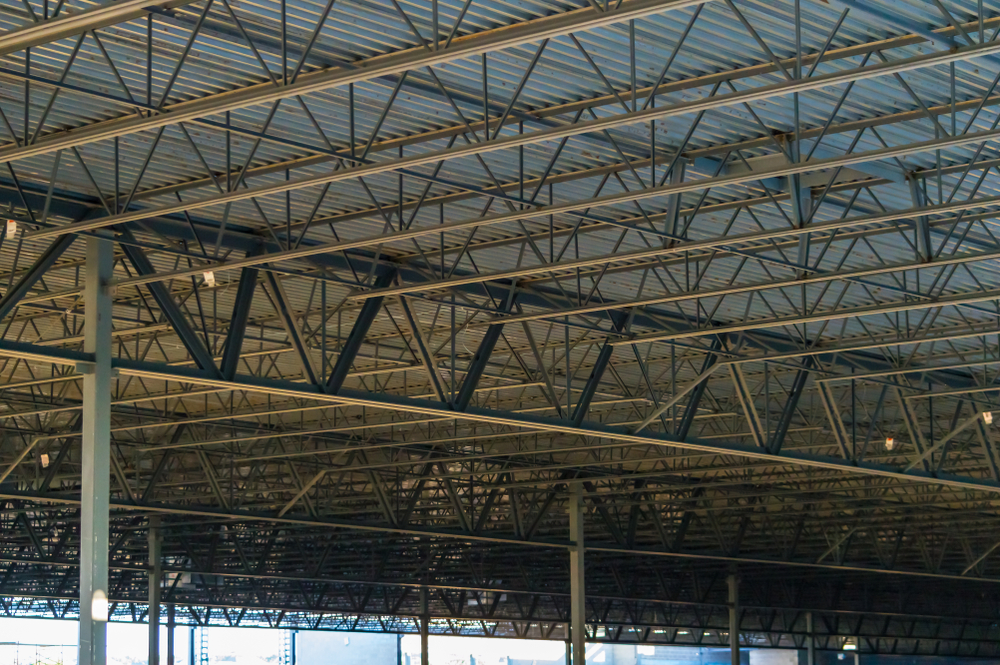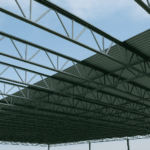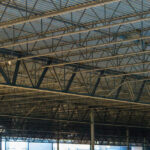In modern construction, sustainability is no longer an optional consideration — it’s a requirement. Structural systems must not only deliver strength, efficiency, and cost-effectiveness but also align with environmental and long-term performance goals. Steel joists and steel deck, widely used in commercial, industrial, and institutional buildings, meet these demands through their durability, recyclability, and efficient use of materials.
This article explores the life cycle of steel joists and deck, from raw material sourcing to end-of-life recycling, and highlights their role in sustainable construction practices.
1. Raw Material and Manufacturing
Steel joists and deck begin their life cycle in steel mills, where iron ore and recycled scrap are combined in energy-efficient processes such as electric arc furnaces (EAF).
- Recycled Content: Structural steel in the U.S. is typically made with 60–90% recycled material, reducing demand for virgin resources.
- Efficient Manufacturing: Steel deck is cold-formed from coil steel, minimizing waste, while joists are fabricated from lightweight, high-strength steel sections engineered to maximize structural performance with the least amount of material.
This early stage contributes to sustainability by lowering the embodied carbon of the finished product.
2. Transportation and Installation
Because steel joists and deck are manufactured to precise project specifications, there is minimal material waste during transportation and erection.
- Prefabrication Benefits: Shop fabrication reduces jobsite waste and speeds up construction schedules.
- Lightweight Efficiency: Open web joists use less steel than comparable wide-flange beams, lowering transportation weight and associated emissions.
- Adaptability: Deck profiles are engineered to carry composite concrete slabs, roof loads, and diaphragm forces, reducing the need for additional materials.
3. Service Life and Durability
Once installed, steel joists and deck provide decades of structural reliability with minimal maintenance.
- Strength-to-Weight Ratio: Open web design allows efficient load transfer while reducing overall steel tonnage.
- Corrosion Protection: Galvanized or painted finishes extend the service life, particularly in roof and floor deck exposed to moisture.
- Fire Resistance: With appropriate fireproofing systems, steel deck assemblies meet stringent fire-rating requirements.
- Integration with Other Systems: Deck supports mechanical, electrical, and acoustical systems, extending functional value across the building’s lifespan.
4. End-of-Life and Recycling
One of the greatest sustainability advantages of steel is its infinite recyclability.
- No Downcycling: Unlike some materials that degrade in quality after recycling, steel can be repurposed into new joists, deck, or other structural elements without losing strength.
- Deconstruction and Reuse: Steel deck panels and joists can be disassembled and reused in new projects when carefully managed.
- Circular Economy: The recycling process reduces waste to landfills and lowers demand for virgin steel production.
The high recycling rate of steel (over 90% recovery in the U.S.) ensures that steel joists and deck contribute to a closed-loop life cycle.
5. Contribution to Green Building Certifications
The sustainable attributes of steel joists and deck directly support green building frameworks such as:
- LEED® (Leadership in Energy and Environmental Design): Credits for recycled content, regional material sourcing, and construction waste reduction.
- Green Globes & Living Building Challenge: Recognition for materials that reduce embodied carbon and enhance life cycle performance.
- Environmental Product Declarations (EPDs): Available for many steel products, providing transparency on carbon footprint.
Conclusion
Steel joists and deck represent more than just structural efficiency—they embody a sustainable construction solution with a favorable life cycle. From their high recycled content and material efficiency to their long service life and recyclability, these products align with modern demands for resilient, low-carbon buildings.
As the construction industry continues to prioritize sustainability, steel joists and deck will remain vital components in creating structures that are strong, efficient, and environmentally responsible.



